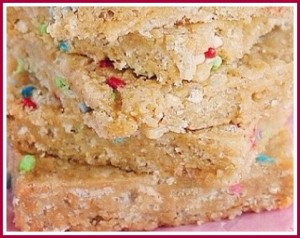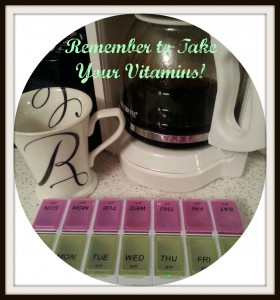
by admin | Nov 14, 2014 | Tips and Recipes
This pumpkin soup is one of my favorite fall soup recipes.
It is so easy to make and super yummy! Make it all winter long too!
Pumpkin Soup Recipe
Ingredients:
- 2 tsp coconut oil
- 1 onion diced
- 4 minced garlic cloves
- 2 cups pumpkin puree
- 2 cups vegetable broth
- 2 cups coconut milk
- 1 bay leaf
- ¼ tsp dried thyme
- 2 tbsp red curry paste
- ½ tsp nutmeg
- sea salt and pepper
- 4 tbsp pumpkin seeds or throw in a few pumpkin cornbread croutons to fancy it up!
- 4 tbsp fresh cilantro
Directions
- Heat coconut oil over medium heat, add onions, garlic, and pumpkin and cook 4-5 minutes
- Add vegetable broth, coconut milk, bay leaf, thyme, and curry paste and cook 15-20 minutes. Add more broth if too thick.
- Remove from heat, remove the bay leaf, and puree with a blender
- Place back on stove, add nutmeg, salt, and pepper. Heat until warm.
- Place soup in bowls and top with pumpkin seeds and cilantro
Enjoy! Send us your favorite to try – info@idinhealth.com or post it on our Facebook.

by admin | Oct 28, 2014 | Tips and Recipes
Healthy for Adults & Fun for Kids
I love to make my own healthy snacks. I know exactly what ingredients are in them and I can modify the recipe to my liking.
Here is a good one if you need a healthy, tasty treat. I made these for my daughter, nieces and nephews so I added some sprinkles to make them fun for them.
Vanilla Cake Batter Energy Bar Recipe
Ingredients:
- 1 cup sprouted brown rice crispies
- ½ cup oat flour (you can substitute some of the oat flour with vanilla protein powder in equal parts)
- 1 tsp vanilla extract
- ¼ cup nut butter of your choice (I used Cashew, the type you pick will change the flavor slightly)
- Dash of salt
- 4 tbsp raw honey
- *sprinkles on top if you feel fun
Directions:
- Combine dry ingredients and stir well
- Combine wet ingredients and mix well
- Combine wet and dry ingredients and stir until evenly coated
- Line a 6×6 pan with wax paper and pour mixture in. Press it down hard.
- Refrigerate, cut and ENJOY
Share your favorites with us! Email recipes to nurse@idinhealth.com. I would love to try them out!
~ Sarah, RN @ Innovative Directions in Health

by admin | Oct 17, 2014 | Tips and Recipes
Lindsey’s Healthy spin on Chicken Noodle Soup
Now that fall has arrived here in the Midwest, hearty warm soups are popping up on the menu! Substitute quinoa in place of the noodles for a healthier spin on the traditional chicken noodle soup.
The quinoa adds even more protein to the dish. Add poblano, habanero or jalapeño peppers in it to give it the slightest touch of spice which helps boost your metabolism and all your favorite vegetables like carrots, celery, onions & bell peppers for healthy, low calorie healthy boost. You could also add a can of diced tomatoes to deepen the flavor.
Since this freezes great, make up a big batch and save individual portions for quick meals in the future.
Slow Cooker Chicken Quinoa Soup
Servings: 8-10
Serving Size: 1.5 cups
Ingredients
- 3lbs. chicken thighs, boneless and skinless (I like trader Joe’s organic, free range skinless chicken breasts)
- 3 cup quinoa (I used Trader Joe’s tri colored quinoa, but any will work)
- 3 ribs celery, chopped
- 8 carrots, chopped
- 2 poblano peppers or 3 bell peppers, chopped (add orange, yellow, & red peppers)
- 1 onion, chopped finely
- 6 garlic cloves, minced
- 8-10 cups chicken broth
- 1/2 tsp. cumin
- 1/2 tsp. dried thyme
- Salt to taste
- Fresh ground pepper
- Add 1/4 habanero & ½ jalapeño (if you like it spicy!)
Instructions
- Add everything to a slow cooker.
- Cook on low for 8 hours.
- Let soup cool to allow chicken to cool. Take two forks and shred chicken and add back to soup.
More healthy recipes and tips are on our Blog. Click here. Don’t forget to subscribe to get the recipes emailed to you.
Enjoy! ~ Lindsey, Nurse @Innovative Directions in Health

by admin | Oct 14, 2014 | Tips and Recipes
A regular monthly breast self-exam is very important. Self-exams help you to be familiar with how your breasts look and feel so you can alert your healthcare professional if there are any changes.
Pick the same time every month, as your breasts change throughout your cycle. It is most comfortable after your cycle when your breasts are not tender. Follow these steps below:
Step 1: Start by looking at your breasts in the mirrorwith your shoulders straight, arms by your side, and then with your arms on your hips.
While looking in the mirror become familiar with the normal shape, size, and color of your breasts.
- Your breasts should be evenly shaped with no visible lumps, bumps, dimpling, or swelling
- Lumps under the surface can be normal. Breasts can be cystic. Get to know lumps that are normal for you and watch for changes in size, shape, or firmness.
- It is normal for your breasts to be asymmetrical as long as this is normal for you and does not abruptly change.
If you see any of the following changes, bring them to your doctor’s attention:
- Dimpling, puckering or bulging of the skin
- A nipple that has changed position, has discharge, or has become inverted (pushed inward instead of sticking out)
- Redness, soreness, rash or swelling
- If ever in doubt ask your provider. You can never be too cautious with your health.
Step 2: Raise your arms and look for the same changes as above.
Step 3: Lightly squeeze the nipple between your thumb and pointer finger and check for any fluid (discharge) coming out of one or both nipples (this could be a watery, milky, or yellow fluid or blood).
Step 4: Check both breasts feeling for any lump, thickening or hardened knot. Feel your breasts while lying down.
- To do this, bend your left elbow and put your left hand behind your head to relax your muscles. Use your right hand to feel your left breast.
- Use a firm, smooth touch with the first few finger pads of your hand, keeping the fingers flat and together. Use a circular motion, about the size of a quarter. Cover the entire breast from top to bottom, side to side — from your collarbone to the top of your abdomen, and from your armpit to your cleavage.
- Follow a pattern to be sure that you cover the whole breast. You can begin at the nipple, moving in larger and larger circles until you reach the outer edge of the breast. You can also move your fingers up and down vertically, in rows, as if you were mowing a lawn. The up-and-down method is often easier and prevents missing areas of the breast.
- Be sure to feel all the layers of your breasts using different pressures: for the skin and tissue just beneath, use light pressure; use medium pressure for tissue in the middle of your breasts; use firm pressure for the deep tissue in the back. When you’ve reached the deep tissue, you should be able to feel down to your ribcage. It is very important to feel for lumps in your armpits and the top outer area of your breasts (use a clock and focus on the 9 to 12 o’clock area). This is often where lumps of concern are located. Switch sides and repeat.
Step 5: Finally, feel your breasts while you are standing or sitting. Many women find that the easiest way to feel their breasts is when their skin is wet, so they like to do this step in the shower. Cover your entire breast, using the same hand movements described in step 4. If the steps seem difficult hang a breast examination card in your shower. They serve as a reminder with easy instructions.
If you notice any changes to your breasts call your healthcare provider to have them evaluated. For additional peace of mind, our nurses are available for a quick breast health check for our patients.
Current patients, if you have any concerns or would like to be shown how to do your own self-exam, please contact us to set up a quick complimentary appointment with one of our Nurses.

by admin | Oct 13, 2014 | Tips and Recipes
How Can I Help Myself Remember to Take my Vitamins and Medications?
Taking your supplements and medications consistently is important but can be challenging.
We have put together some helpful tips to make it easier.
- Use 2 Pill Boxes. Pick up TWO 7-day pill containers for morning vitamins and evening/night-time vitamins. Make sure they are see through. This is the best and easiest strategy to get you set for taking them all week long. This simple piece of plastic can make all the difference. You can find jumbo boxes at Bed Bath & Beyond, Walgreens, Bloomington Drug, etc. Fill them up with your pills every Sunday.
- Location! Create a routine place to keep your vitamins where you already have a daily routine. Whether it is brushing your teeth, making coffee or at your table if you eat breakfast and dinner there each day. Store your daily vitamins in a place where you will see them. A great place is next to the sink in the bathroom where you get ready in the morning and for bed. Out-Of-Sight = Out-Of-Mind.
- Educate Yourself. Knowing why you are taking the particular vitamin, mineral or other supplement is a key component to staying motivated to keep taking them. Also knowing when to take them (on an empty stomach, with food, with vitamin C, etc.) will greatly impact their effectiveness.
- Buddy System – Taking your supplements with someone else can keep you accountable. One spouse is usually more compliant or knowledgeable than the other and can help out.
- Set an Alarm. Set your phone, alarm clock, watch or computer to go off to remind you it is time to take your vitamins.
- Streamline Your Vitamins – Maybe you are taking too many vitamins. Talk to Dr. Sinda or your doctor to see if you can eliminate some of the vitamins you take.
- Timing. If you have to take pills on an empty stomach in the morning (such as thyroid) keep them at bedside with a glass of water. Set alarm 30 minutes before it is time to wake up, take it and hit snooze. If you are really motivated, take your pill and get up and start your day with a short 15 to 20 minute workout or take them when you first get up then take a shower and get ready before eating breakfast.
Compliance is very important. If you find out you are not good at taking your vitamins, medications or bio-identical hormones at a certain time of the day or are having trouble with compliance, contact us.
We may be able to come up with suggestions or an alternative for you.
Next time you are in to see Dr. Sinda, bring a list of what supplements / vitamins you are taking, the doses and times of day you take them and he will review it with you.
If you have a Compliance Tip that works well for you, share it with us on Facebook.

by admin | Sep 18, 2014 | Tips and Recipes
One of my favorite things to snack on is Roasted Chickpeas!
I love to coat these delicious beans in different spices and roast them to a crunchy perfection. They lose all of their bean-y taste and remind me of crunchy nuts. I love to mix it up and roast them in different flavors depending upon if my craving is for something sweet or salty.
This yummy snack is high in protein and fiber and will also give you a boost of energy.
Get creative! Try flavors such as: Garlic Parmesan, Honey Cinnamon, Cinnamon-Sugar, Sesame Soy, Ranch, etc. My favorite is Sea Salt.
Roasted Chickpeas Recipe
Ingredients:
– 1 can Chickpeas
– 1 tbsp Olive Oil
– Sea Salt, Pepper (or whatever seasonings you prefer)
Directions:
– Preheat oven to 400 degrees
– Rinse, drain, and dry chickpeas until very dry patting with paper towels (or they will not get crunchy)
– Spread on pan and roll around in oil
– Bake on 400 on bottom rack for about 30 minutes. Take out and add seasoning. Let cool
– Return to oven for 15 to 30 minutes until crunchy. Turn frequently to prevent burning
– Turn oven off and open oven door and leave beans inside oven to cool down (they will be crunchier than cooling at room temp)
Store in air-tight bag or container. Keeps crunchy a few days.
Enjoy! Send me a message and let me know what your favorite combination is!
~ Sarah, RN @ Innovative Directions in Health






